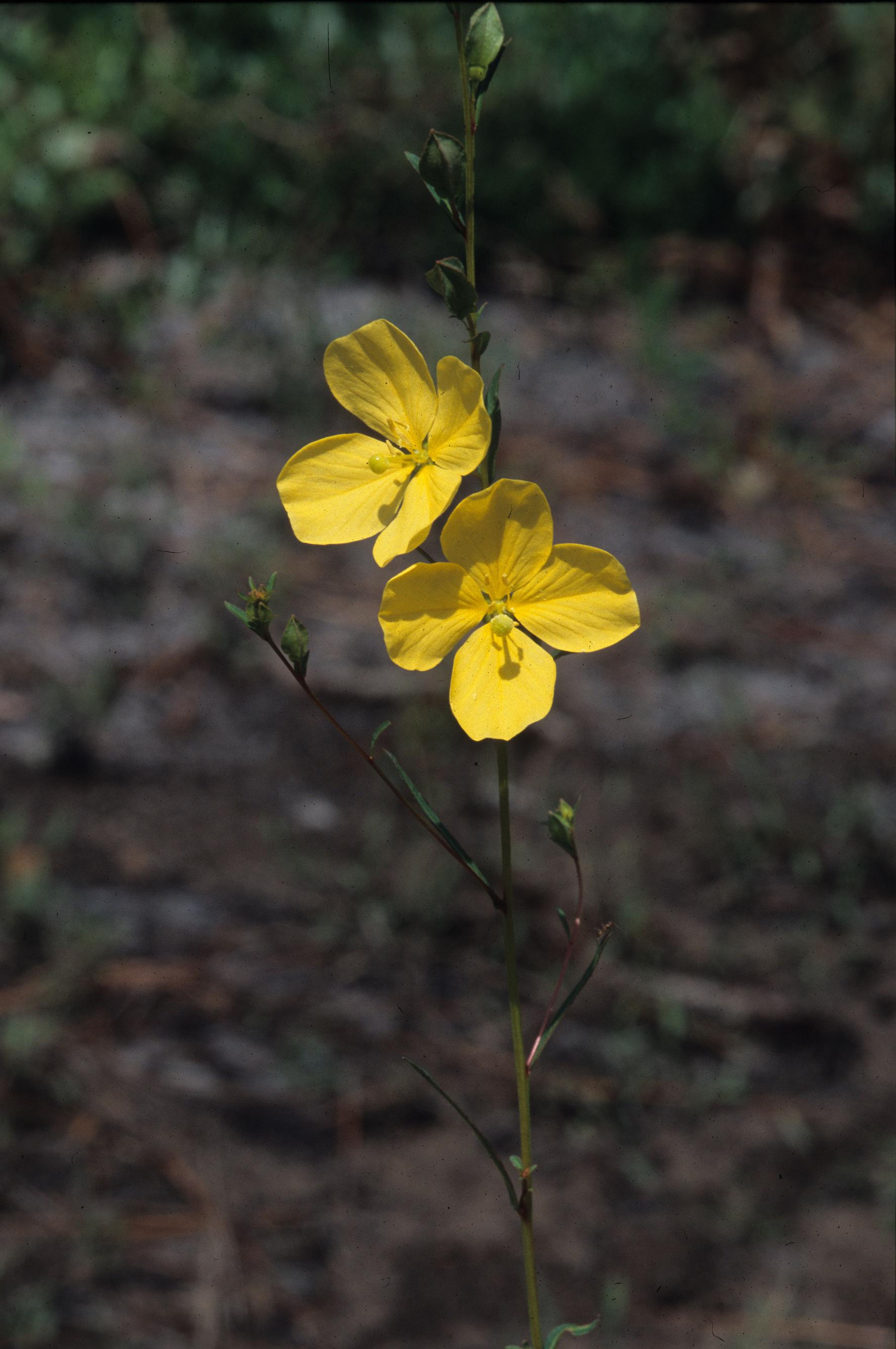Ludwigia virgata
| Ludwigia virgata | |
|---|---|

| |
| Photo was taken by Gil Nelson | |
| Scientific classification | |
| Kingdom: | Plantae |
| Division: | Magnoliophyta - Flowering plants |
| Class: | Magnoliopsida – Dicotyledons |
| Order: | Myrtales |
| Family: | Onagraceae |
| Genus: | Ludwigia |
| Species: | L. virgata |
| Binomial name | |
| Ludwigia virgata Michx. | |

| |
| Natural range of Ludwigia virgata from USDA NRCS Plants Database. | |
Common name: Savannah primrose-willow
Contents
Taxonomic notes
Description
“Repent or erect, usually branched, short-lived perennials, or rarely annual. Floral parts in 4-7’s; hypanthium not prolonged beyond ovary. Capsules longitudinally or poricidally multiseriate, rarely uniseriate. Most of the erect species produce basal offshoots, which have ovate to obovate leaves, in the late summer and fall. Bracteoles occur in pairs on the pedicel or stipe or on the base of the hypanthium.” [1]
"Stems erect, usually branched, usually glabrous below, to 1 m tall. Leaves alternate, lanceolate or elliptic, usually glabrous, to 7.5 cm long and 1 cm wide; sessile. Sepals 4, reflexed, ovate, 5-10 mm long, 2.5-4.5 mm wide; petals 4, 10-16 mm long, 7-11 mm wide; styles 7-9 mm long, stylopodium prominent. Capsules cubical, 4-angled, usually narrowly winged, appressed pubescent to glabrous, 5-7 mm long, 3.5-5 mm broad; bracteoles linear, 2-4 mm long; pedicels to 15 mm long." [1]
Distribution
Ecology
Habitat
This species can be found in moist areas along cypress swamps, pine flatwoods, hillside bogs, wet depressions in savannas, and around ephemeral ponds. [2] They thrive in moist sandy loam and can occur in open lit areas. [2] This species has also been observed in human disturbed habitats such as along roadsides. [2] Associated species include Cypress, Pinus, Rhexia, and Pteridium. [2]
Phenology
L. virgata has been observed flowering from May through September with peak inflorescence in June and fruiting from June through August.[2][3]
Conservation and management
Cultivation and restoration
Photo Gallery
References and notes
- ↑ 1.0 1.1 Radford, Albert E., Harry E. Ahles, and C. Ritchie Bell. Manual of the Vascular Flora of the Carolinas. 1964, 1968. The University of North Carolina Press. 744-7. Print.
- ↑ 2.0 2.1 2.2 2.3 2.4 Florida State University Robert K. Godfrey Herbarium database. URL: http://herbarium.bio.fsu.edu. Last accessed: June 2014. Collectors: Loran C. Anderson, M. Davis, Robert K. Godfrey, Richard D. Houk, Ed & Lisa Keppner, S. W. Leonard, R. A. Norris, Annie Schmidt, Roomie Wilson, and Jean W. Wooten. States and Counties: Bay, Calhoun, Escambia, Franklin, Gulf, Jackson, Leon, Liberty, Polk, Santa Rosa, Wakulla, and Walton. Georgia: Lowndes and Thomas.
- ↑ Nelson, G. PanFlora: Plant data for the eastern United States with emphasis on the Southeastern Coastal Plains, Florida, and the Florida Panhandle. www.gilnelson.com/PanFlora/ Accessed: 12 DEC 2016